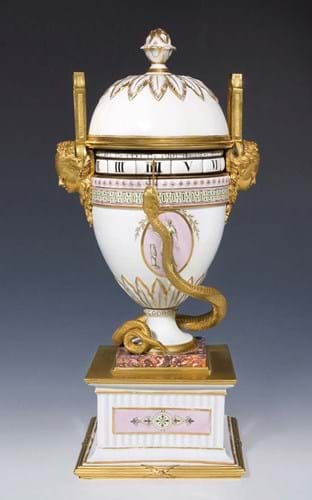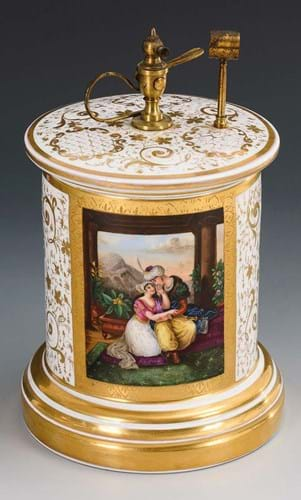It dates to the late 1830s and is based on the invention by the German chemist Johann Wolfgang Döbereiner in Jena.
In 1823, he discovered that the interaction of diluted sulphuric acid and zinc produced hydrogen gas. When the hydrogen passed through a platinum net it caused a further reaction, in the course of which the platinum became warm enough to ignite the gas and produce a gentle flame.
In the following decades different versions of Döbereiner’s invention were produced. This particular example is housed in a KPM porcelain case painted with an Oriental couple. It was presented by the Berlin porcelain manufacture to a certain Wilhelm Freytag, the one-time co-owner of a porcelain company in Furstenberg.
Döbereiner made the mistake of failing to patent his invention, which formed the basis for all lighters until the 1880s. It is thought that some 20,000 were produced throughout Europe, for which Döbereiner received nothing.
Wendl is hoping to achieve at least €1900.

Porcelain and bronze clock with ‘cercles tournants’, late 19th century model – estimate €7500 at Wendl.
Also worthy of note is also a porcelain and bronze clock with ‘cercles tournants’.
It is a late 19th century model inspired by similar clocks from the late 18th century, produced by the celebrated Parisian company Boin-Taburet which gained an international reputation for recreating decorative works of art and household items, many of them in silver, from days gone by. The vase clock is expected to bring at least €7500.















